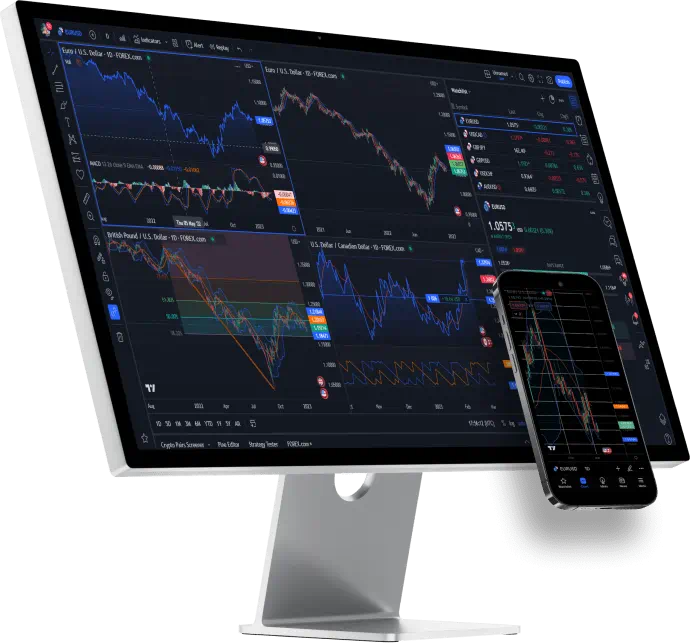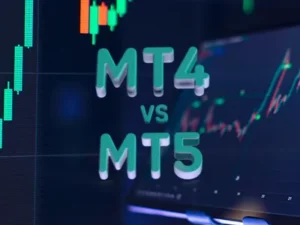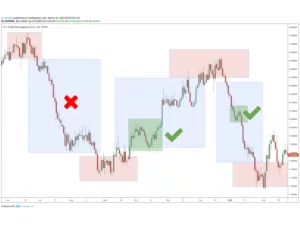Virtual trading platforms give you a safe space to test strategies without risking real money. In India you can open a demo account or use a paper-trading app, place trades in real-market conditions but using virtual funds, and see how your ideas perform under live conditions. This approach is great whether you are new to trading or you have some experience but want to refine a system or set of rules before going live. You log into a paper trading platform, run the rule over several weeks, record how many trades hit target vs stop-loss, examine winner/loser size, calculate your average return and % of winning trades. By doing this repeatably you gain confidence, understand your own style, and adjust the strategy (for example change the stop-loss to 2% or target to 5%) based on what you learn. That disciplined test makes your live-trading transition smoother because you have already collected data and experience.
Why Use Paper Trading Platforms in India
Paper trading platforms are powerful tools that let traders learn, practice, and perfect their strategies without risking real capital. In India, they are especially valuable for beginners who want to understand how the stock, futures, and options markets function before trading live. These platforms provide real-time market data, trade simulations, and analytics—helping users gain hands-on experience in a controlled and risk-free setting.
Risk-Free Environment to Build and Test Strategies
Using a paper trading account means you’re not putting actual money at risk while developing your trading plan. You can execute buy and sell orders, hold positions for different timeframes, and record every outcome to review performance later. Because most demo platforms replicate live market data, traders experience the same price movements, volatility, and trade execution patterns found in real trading. This environment is ideal for testing new strategies or indicators before applying them with real funds.
Platforms such as Bullish Zone, IPO Central, and Neostox provide accurate Indian market data that mirrors real trading sessions on NSE and BSE. These tools allow traders to evaluate strategy performance under realistic conditions without any fear of losing money. Over time, consistent demo practice helps build confidence, technical knowledge, and better decision-making habits.
Understand Order Types, Tools, and Trading Behaviour
In Indian markets, traders encounter several types of orders—market, limit, stop-loss, and bracket orders, as well as futures and options contracts. Paper trading platforms provide the perfect opportunity to understand these tools in action. You can learn how to use stop-loss orders correctly, when to take partial profits, and how to manage margins efficiently.
Platforms like Neostox.com let you practice option buying, futures trading, and hedging positions just as you would in a live account. Practicing with these order types sharpens discipline and prepares traders for different scenarios, such as rapid price swings or margin calls. The more familiar you become with order behavior, the more confident and precise your execution becomes in real trading.
Choosing the Best Platform for Your Strategy
Selecting the right paper trading platform depends on your trading style and goals. Whether you trade stocks, options, or derivatives, the ideal platform should provide accurate data, flexibility, and performance tracking tools.

When choosing a platform, ensure it offers:
- Live Indian market data for NSE/BSE stocks and derivatives
- Support for equities and F&O (if your strategy involves them)
- Customizable virtual portfolio size
- Reporting and analytics tools for trade performance
- Easy demo reset option to restart testing anytime
Websites such as Pocketful.in, Bullish Zone, and Neostox highlight these features as essential for serious learners. A good platform should feel as close as possible to a real trading terminal, helping you transition smoothly when you go live.
Popular Platforms in India
- Neostox – Offers up to ₹1 crore in virtual money, F&O support, and live NSE data. Excellent for testing stock and derivative strategies.
- TradingView – Enables paper trading with both global and Indian data. Ideal for chart-based traders focusing on technical analysis.
- IPO Central – Useful for testing equity trading strategies and IPO allocations in a simulation format.
Choose your platform based on your focus: if you mainly trade stocks, a simple simulator works; if you trade futures or options, look for advanced tools with margin and Greeks calculation features.
Structuring Your Testing Strategy
A structured testing approach helps traders understand what works and what doesn’t before risking real capital. Random trades offer little value; consistent rule-based testing reveals actual performance patterns.

Define Your Trading Rule and Timeframe
Start by defining your strategy parameters in detail:
- Entry condition (e.g., RSI crosses above 40 after dipping below 30)
- Stop-loss level
- Profit target
- Instrument and timeframe
Buy when RSI falls below 30 and crosses above 40 on the 15-minute chart; exit after 3 days or when a 2:1 target is hit. Writing rules in advance removes emotion from decision-making and makes results measurable.
Testing for Different Market Conditions
Markets constantly change between trending, range-bound, and volatile phases. A strategy that performs well in one condition might fail in another. Paper trading allows you to test across all these environments before risking capital.
Bullish, Bearish, and Sideways Markets
Test your approach in uptrends, downtrends, and sideways ranges. For instance, if your breakout strategy performs well in bullish markets, check how it reacts when the market becomes flat or corrective. Using a demo account during multiple phases of the NIFTY 50 or Bank Nifty movement helps you identify strategy limitations.
Stress Testing and Drawdowns
Stress testing is about simulating tough conditions—like five losing trades in a row or a 10% market drop. Use your virtual capital to measure how much drawdown your portfolio can handle. Set a maximum loss limit (1–2% per trade) and test if your strategy remains sustainable. This builds realistic expectations and teaches emotional control for live trading.
Translating Demo Results into Live Trading
Once you have consistent results on a paper account, it’s time to apply them carefully in real trading. However, emotional and psychological differences between virtual and live trading must be managed properly.
Adjusting for Real-Money Behaviour
Demo accounts don’t simulate fear, greed, or pressure from real money. When going live, start small—use the same strategy but with smaller trade sizes. For example, if your paper trades were worth ₹1 lakh each, begin live trading with ₹10,000–₹20,000. This helps you adapt emotionally while maintaining the same discipline. Continue testing new ideas on your demo account even as you trade live.
Capital, Risk, and Money-Management Rules
Use your demo results to define your capital requirement, risk per trade, and profit targets. A proven approach is to risk only 1–2% of your total capital per trade. If your demo account showed a 60% win rate with a 2:1 reward-to-risk ratio, you can estimate your long-term potential returns and drawdown tolerance.
Monitoring and Iteration Over Time
Successful traders don’t rely on luck — they rely on tracking, analysis, and consistent improvement. Monitoring performance over time helps identify strengths, weaknesses, and changes in market behavior. Whether you’re paper trading or live trading, regularly analyzing your data ensures your strategy remains relevant and profitable. Continuous iteration is what turns short-term testing into long-term growth.
Recording Performance Metrics
Keeping accurate records of your trades is essential for understanding how your strategy performs across different conditions. Track key performance metrics such as:
- Total number of trades executed
- Win rate (%) — the percentage of trades that ended in profit
- Average profit and average loss
- Risk-to-reward ratio
- Maximum drawdown — the largest peak-to-trough loss during a period
- Profit factor — total profit divided by total loss
Use a spreadsheet or trading journal to record these figures daily or weekly. Visualize them through charts, graphs, or dashboards to quickly identify performance trends. For example, if your win rate stays high but profits decline, it could indicate that your average wins are smaller than your average losses. Consistent data tracking helps you understand where adjustments are needed — whether in entry timing, stop-loss levels, or trade frequency. A well-documented record also helps you stay accountable and objective. Instead of relying on memory or emotion, you’ll make decisions based on facts. Over time, your performance sheet becomes your most valuable tool for learning and improvement.
Review Frequency and Update Rules
Regular review is what turns raw data into actionable insights. Set a specific review period, such as every two weeks or once a month, to evaluate results. During each review:
- Compare current performance to your previous averages.
- Identify deviations — are profits shrinking or losses increasing?
- Determine if the change is due to market conditions (like higher volatility or trend reversal) or due to your execution errors.
If your performance starts to diverge from expectations, don’t ignore it. Pause trading temporarily and analyze whether the market environment has changed. For example, a strategy built for trending conditions may fail during sideways markets. In such cases, you may need to:
- Adjust entry or exit rules.
- Modify position sizes.
- Switch to a more suitable instrument or timeframe.
Once changes are made, continue the cycle: Test → Review → Adjust → Retest. This iterative process helps your strategy evolve with the market and keeps your trading system robust. Over months, you’ll notice improved consistency and a better understanding of how small rule changes affect performance.Traders who continuously monitor and adapt outperform those who trade blindly. Markets are dynamic, and successful trading depends on your ability to learn, adjust, and improve — one review at a time.
FAQ
What is a paper trading platform?
A paper trading platform lets you trade with virtual money in realistic market conditions. You place orders, track profit/loss, test strategies—but no real money is used, so you can learn without financial risk.



